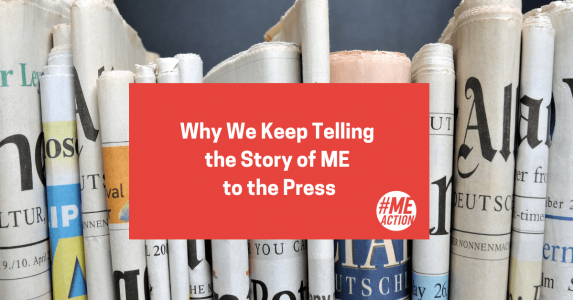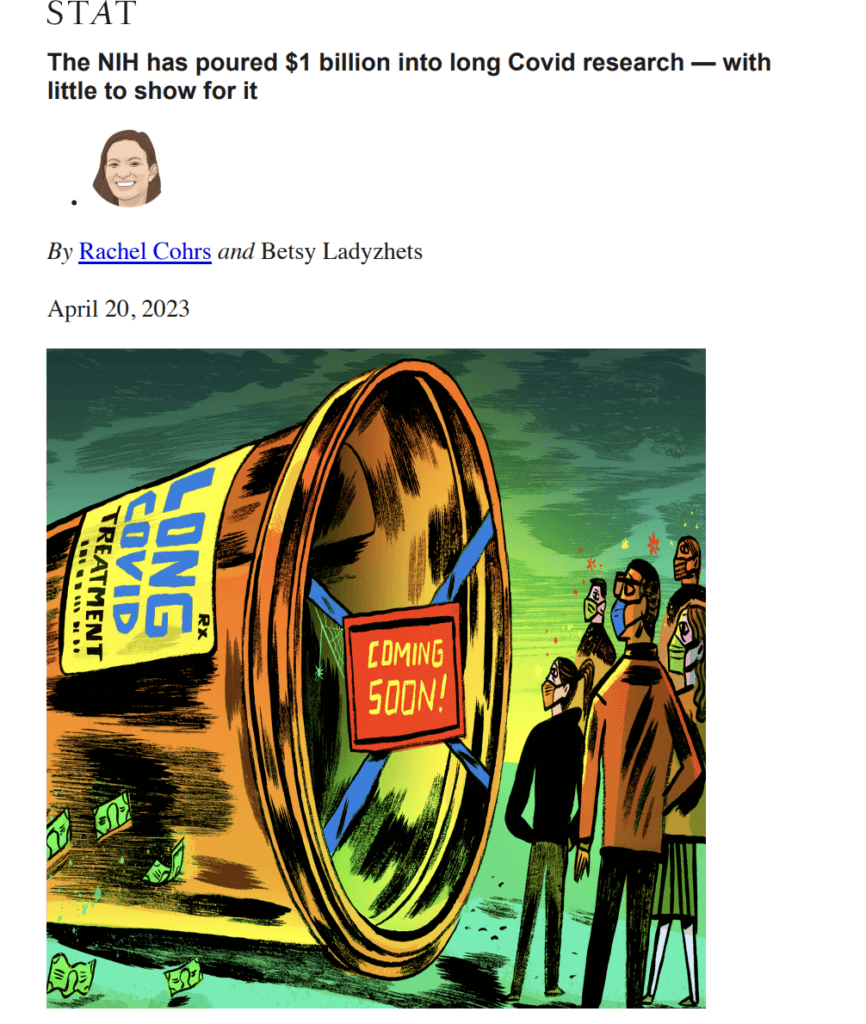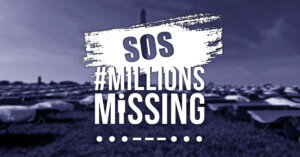Our press work continues to drum a strong beat as we tell the story of ME everyday to the media. We will continue to fight for our community’s decades of expertise living with, treating and researching ME to be heard, and integrated into our government’s Long COVID response. We refused to be erased from the story, or from the response to post-infectious disease.
Over the past several months, we have been busy telling our story about the #MillionsMissing to the press. We’ve spent long hours educating journalists from the Washington Post, Nature, Stat News, Muck Rock, and National Geographic about the nature of post-exertional malaise (PEM), and why trialing exercise interventions for Long COVID is a terrible idea, as the majority of the population has PEM. We know that the fate of Long COVID research has the potential to have a massive impact on ME.
Most recently, we’re thrilled to see the Boston Globe run a front-page story about ME/CFS and Long COVID, thanks to the hard work of our New Hampshire State Chapter, which pitched the story and directed journalists to ME experts.
And, in case you missed, it Ryan Prior wrote an excellent article about the #MillionsMissing demonstration on the National Mall for Psychology Today.
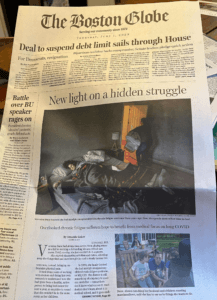 #MEAction Advocates Get Front-Page Article Published about ME in Boston Globe
#MEAction Advocates Get Front-Page Article Published about ME in Boston Globe
Our #MEAction New Hampshire chapter did an amazing job pitching the Boston Globe a story about how ME fits into the story of Long COVID, which they published on their front page above the fold! The advocates directed journalists to ME experts, including Dr. Bateman and Dr. VanElzakker. Special applause for Leah who worked with #MEAction’s press team over the course of a year, and brought all her skills and experience to bear to make this article such a success!
In the article, Leah Stagnone described the crisis of ME/CFS as a systemic failure on the part of the government that must be rectified.
“We don’t want people to see it as ‘Oh, that’s a sad story.’ For us, it’s a policy issue,” she said. “It’s a system issue because our illnesses have been so severely underfunded at the federal level because of this lack of medical education, because of stigma and medical misogyny.”
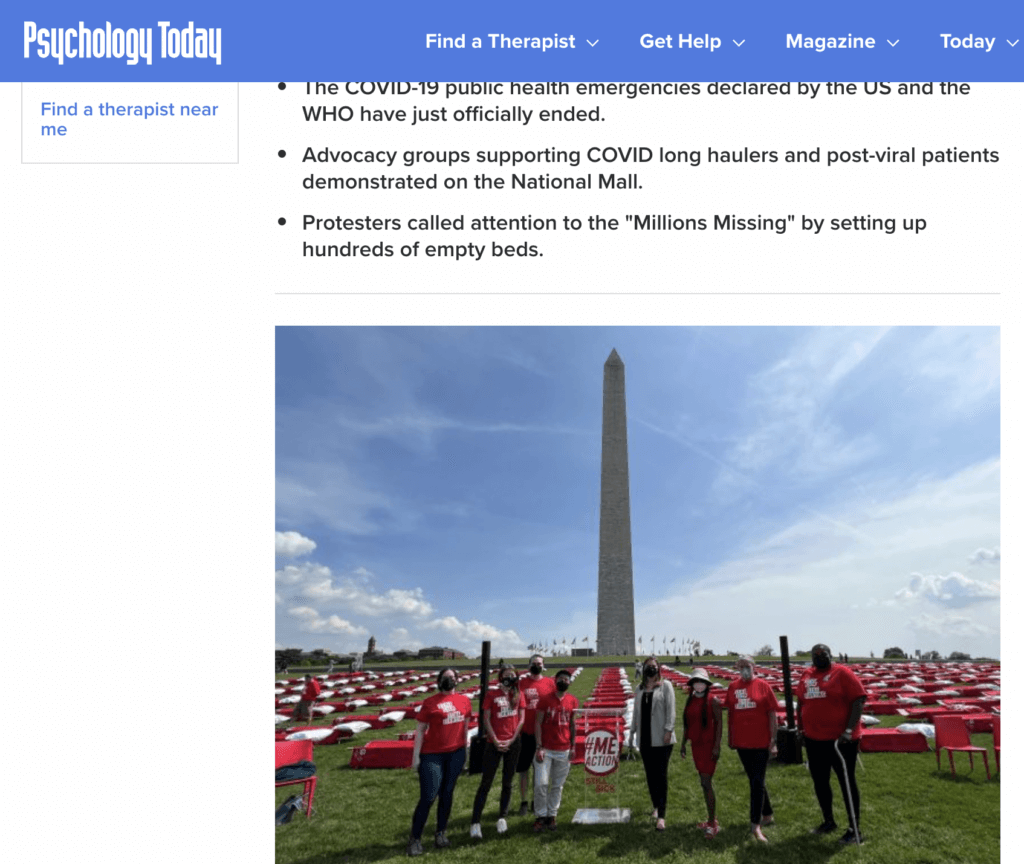 A Historical Moment for ME on the National Mall
A Historical Moment for ME on the National Mall
#MEAction board member, Ryan Prior, profoundly compares the #MillionsMissing demonstration to historical moments of change in his Psychology Today article.
“The installation of empty beds aimed to capture some of the same spirit permeating the HIV movement of the 1980s. They recall iconic imagery like that seen when the AIDS Quilt was displayed on the Washington Mall, or when disabled activists crawled up the steps of the US Capitol demanding the passage of the Americans With Disabilities Act.”
The article aptly quotes #MEAction Director of Scientific and Medical Education, Jaime Seltzer, about why we must sustain the fight for change.
“People with epilepsy, AIDS, and autism have all had to fight for their lives. Despite popular conception, scientific progress isn’t an engine that runs on its own. It needs all of our fuel—our fire—to make it move,” Seltzer said.
#MEAction spent many months this spring having multiple, hour-long conversations with reporters from the Washington Post, Nature, Stat News, Muck Rock, and National Geographic about the nature of post-exertional malaise (PEM), about the history of our community, and why trialing exercise interventions for Long COVID is a terrible idea, as the majority of the population has PEM.
“Studying exercise as a treatment could “frame long Covid as something that can be overcome with grit and hard work,” said Jaime Seltzer, the director of scientific and medical outreach at MEAction, arguing that such framing is “unsound and ethically troubling.” – Stat News article.
We know that Long COVID research can have a massive impact on the ME community, as nearly half the Long COVID community is developing ME. Launching clinical trials focused on drugs already showing promise in the ME community will provide valuable data, and offer relief to both populations. An exercise trial offers none of this and, worse, may be a huge step backwards for everyone.
We are glad to see major newspapers reporting on our communities efforts to raise the alarm on the exercise trial, from #MEAction’s letters to NIH to Long COVID Justice’s petition. While we were disappointed to see some researchers represent exercise as a tool that “if done correctly” may help (misrepresenting the enormity of PEM and missed opportunity of trialing other clinical interventions), we applaud the journalists’ diligent efforts to bring this crucial issue to light.
The amount of work that it takes to educate journalists about ME – and to ensure that ME is not erased from the Long COVID story – is enormous! If you are able, we ask for your financial support to continue to make this work a success.


